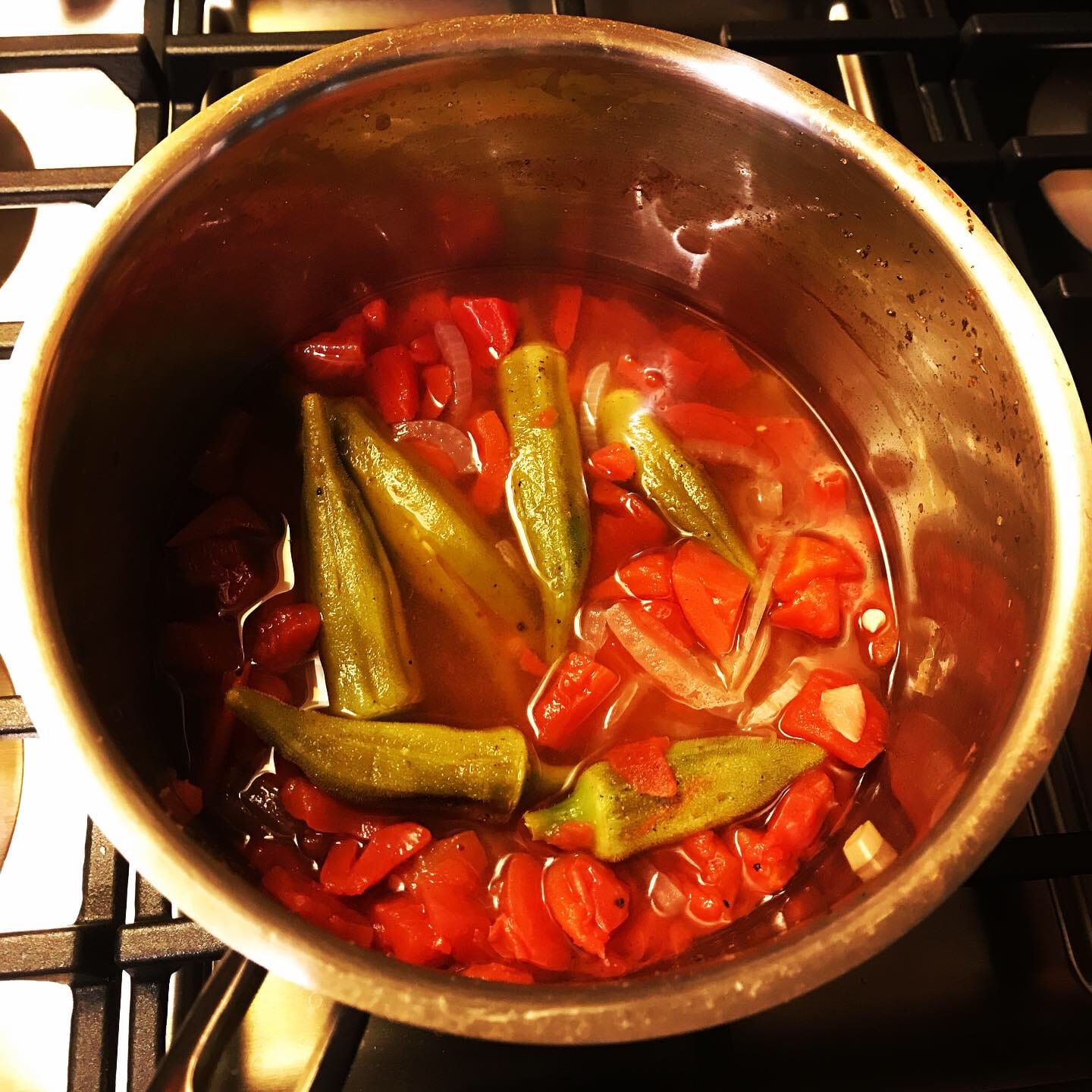Translate
The Real Dirt
Outrageously Healthy Okra
Wednesday, September 18, 2019 Filed in: Seeds of Wisdom
Happy Seeds of Wisdom Wednesday! We took a break for a while to make space for promotion of our Garden Tour event that happened on Saturday. Touring around 4 of the Ukiah community gardens served as a great reminder of the diverse array of produce being grown locally.
Okra is in season right now but not always the most popular. Its unique mucilage substance makes it less desirable for some. Okra has become widely cultivated around the world and has adopted the name “lady fingers”. It is thought that Okra came from Ethiopia, spread through Egypt then the rest of North Africa and the Middle East. In the 1700s, the Caribbean and United States were introduced to okra by way of the slave trade. In the U.S. okra is most popular in the south and is a key ingredient in many Cajun, Creole and other southern dishes. The wide use of okra in these southern diets is thanks to slaves teaching Creoles to use okra in gumbo and other soups as a thickener.

Okra is part of the mallow family along with cotton and hollyhock. As a tropical plant, okra does best in warm climates with little frost. Okra can be a large plant, growing to 6 feet tall, requiring adequate space when planting. Ideal spacing for okra plants is 18 inches apart, with row spacing around 5 to 6 feet. It’s important to note that if your soil is very nitrogen rich, the okra pods won’t grow as large, whereas the leaves will. You should harvest your okra pods when they’re 4 inches or less, before they get too tough. Being easily affected by cold, okra does not store too well in the fridge and should be stored unwashed and then used within a couple days of being stored.
A unique use of okra is the making of paper or rope from the matured, tough pods. However, okra is commonly fried, sautéed, or used in soups and gumbos. It can also be baked, pickled, steamed, or eaten raw on salads. The green okra pod and the red variety, which turns green during the cooking process, taste the same - a similar flavor to eggplant, green beans and asparagus. If the sliminess deters you from growing and eating okra, you can try pickling okra, roasting it in the oven, grilling it, or cooking it with tomatoes or other acidic sauces to achieve a less gummy consistency and texture. Holding off on cutting it until right before cooking it also helps prevent it from becoming too slimy, as well as soaking the pods in lemon juice or vinegar beforehand.

Okra is an underrated vegetable with a lot to offer. They contain calcium, iron, magnesium, potassium and zinc, along with vitamin A, C, E, K and an array of B vitamins. Okra is a powerhouse of these important vitamins. A one cup serving of okra offers 14% of the daily recommended value of vitamin A – supporting eye and skin health – vitamin B6 and magnesium. Additionally, this one cup serving will provide 40% of your daily value of vitamin C, 15% of your folate, and 26% of your vitamin K. The rich dose of vitamin K from okra will help with proper blood clotting, inhibit bruising, along with supporting bone development and bone health. Okra also has a small amount of protein, more than a lot of fruits and vegetables can offer.
The more unique benefit of okra is the slime, or mucilaginous juices, that provide a significant amount of fiber. This fiber rich veggie can offer significant benefits to your digestive system. As we often emphasis, fiber can help improve digestion as well as the absorption of nutrients and vitamins from the food you eat, which then aids farther down the line in supporting regular bowel movements.
This mucilage is also important for any respiratory issues. Juice from okra was traditionally used to sooth coughs, sore throats, and other respiratory issues. The high vitamin C content is also a piece of this puzzle in supporting a healthy immune system and thus respiratory system. The okra juice has also been said to be powerful when used topically on itchy or dry skin, and for lowering cholesterol. The mucus-like juice from okra binds to cholesterol in the body and is then removed from the body via stool.
The gelatinous mucus from okra helps treat stomach ulcers and gastritis, serving as a glue that binds to bad bacteria in the gut, impeding it from attaching to the lining of the stomach and creating a bacterial infection.

Free radical fighting antioxidants are also abundant in okra, polyphenols especially. These polyphenols are fighting oxidative damage and inflammation, improving cardiovascular health and supporting brain health. Brain health is also supported by the rutin and quercetin found in okra, which have been shown to boost brain function and help reduce dementia and neurological deficits.
Studies have also shown that okra is especially helpful for those with diabetes, due to the plethora of antioxidants in the okra pod’s peel and seeds. Traditional uses of okra realized the benefits of infusing okra seeds in water and drinking it as a way to support healthy blood glucose levels. Okra extract has shown to have positive effects on blood sugar levels as well. It is suggested that due to the okra, the intestinal tract isn’t absorbing as much sugar. Notably, okra could also interfere with the absorption of the metformin medication commonly taken by diabetics.
Studies are looking into the use of okra to help reduce fatigue and muscle weakness. So far, studies suggest that with regular okra consumption the body will have lower levels of lactic acid and thus muscles won’t be as sore and tired, you won’t feel as fatigued, and energy and endurance will increase.

Okra seeds are being studied for adaptogen properties which help your body manage stress. Studies have also shown that okra consumption can improve mood, anxiety and depression.
Okra is also a friend to the liver, helping protect and cleanse the organ and prevent liver disease.
Just like with any medicine, food medicines can also have negative side effects in certain situations. As mentioned before, okra can affect the efficacy of the metformin drug if high quantities are consumed, but it can also affect blood-thinning drugs. Due to a high fructose content, okra can be potentially problematic for anyone experiencing digestive issues, or anyone that has irritable bowel syndrome (IBS) or a fructose intolerance. Okra is also high in oxalates, something to eat less of if you’re prone to kidney stones.
I know I’m inspired to try some new okra recipes after diving into these amazing health benefits, hopefully you are too!
- - -
Sources:
- Healthy and Natural World - Proven Health Benefits of Okra That Are Based on Science by Jenny Hills
- Medical Health Guide - Okra Health Benefits
- EcoWatch - 7 Nutrition and Health Benefits of Okra by Natalie Rizzo
- Organic Facts - Top 6 Nutritional Benefits of Okra by John Staughton
- FoodReference.com - Okra History and Facts
- Southern Exposure Seed Exchange - All About Okra: Cultivating, Cooking, and History by Jordan Charbonneau
The Real Dirt
Sign up to keep up with what's growin' on
around Mendocino County and Lake Counties!


